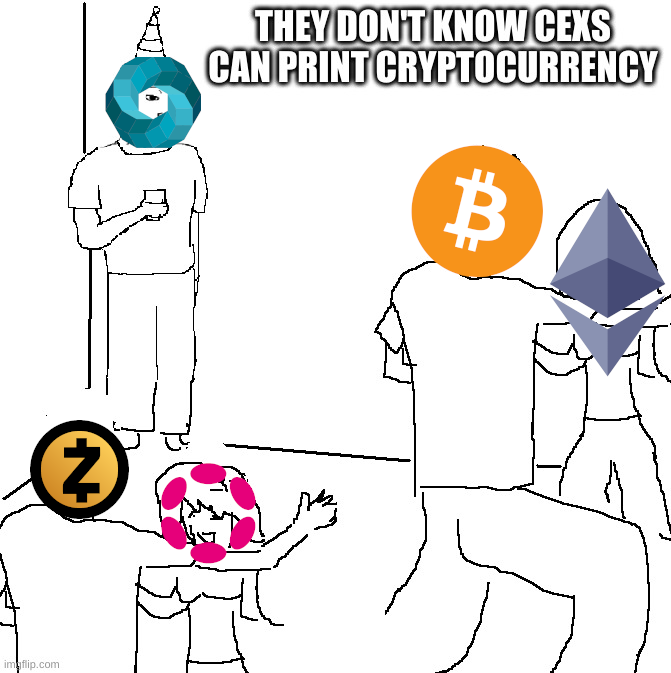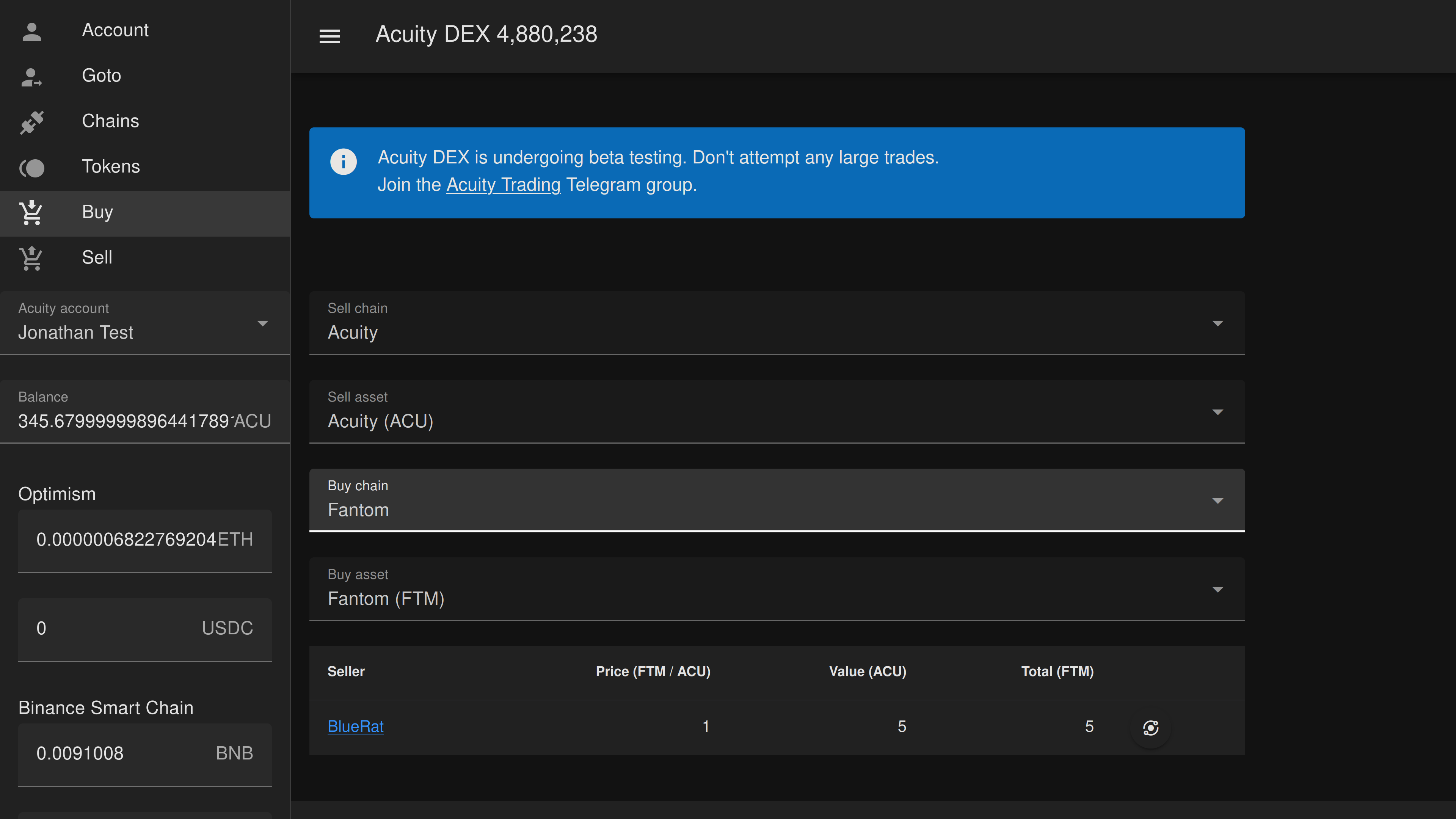
The recent collapse of FTX reinforces in the heaviest way possible the importance of the work we are doing building the Acuity atomic swap, peer-to-peer, cross-chain, fully autonomous, noncustodial, decentralized exchange.
While the loss of billions of dollars of customers' funds strongly reinforces in the minds of the masses the concept of "not your keys, not your crypto", an arguably even greater concept remains unknown to the overwhelming majority.
As we have seen over and over again, centralized exchanges have the technical ability to print crypto out of thin air, either by using their customers deposits instead of storing them, or by simply changing an entry in their own database.
This of course does not create more on-chain crypto. For example, at the time of writing Bitcoin has a supply of 19.21M BTC. This does not include all the BTC that doesn't really exist, but people think they own on exchanges. It has been estimated that at its peak there was 100M paper BTC on exchanges, but it's really impossible to know how much. This sixfold increase in real supply has a massive downward pressure on the trading price of BTC. This is understood by almost no one and is not publicized at all.
This is analogous to the various classifications of central bank and commercial bank money supply, with the money multiplier being a ratio between them.
We could consider cryptocurrency on the blockchain to be M0 and cryptocurrency balances in custodial stores to be M1. Current supply is really M0 + M1, and market cap is (M0 + M1) * price.
Of course with the banks there are mechanisms to control the money multiplier. These are nonexistent in the world of cryptocurrencies. This is why the banking establishment is not very worried about crypto.
When cryptocurrency is deposited into a custodial wallet or exchange, an IOU is issued. This is promoted by the institution as being equivalent to the on-chain cryptocurrency. This claim is fraudulent, but is accepted as true by all. Price aggregators then incorrectly use the trading data of these IOUs to determine the value of the on-chain crypto.
To stay true to the concept of Bitcoin's claimed "limited supply", cryptocurrencies must prevent such IOUs being considered in the mind of the people to be equivalent to real crypto.
One way crypto projects could protect themselves from this debasement by custodial services is for leaders from within the project to publicly call out as fraudulent anyone attempting to issue an IOU for their coin. To my knowledge no project has yet attempted this strategy.
ACU currently has an M0 of 83.7M and an M1 of 0. Ensuring that ACU M1 stays at 0 is the foundation that Acuity is built on.
Acuity DEX

Of course, crypto that is not being traded on centralized exchanges must have viable alternatives that do not involve the issuing of IOUs.
After almost two years of development, the Acuity DEX is now live at acuity.exchange for beta testing. Trading of ACU, and all base coins and ERC20 tokens on Optimism, Binance Smart Chain, Polygon, Fantom, Celo and Avalanche can now be tested. The smart contracts have evolved significantly over the development of the exchange and have reduced significantly in complexity. The web app needs to mature further before larger trades can be considered.
Watch our videos to learn how the exchange works and join the Acuity Trading Telegram group for guidance to help test the future of DeFi cross-chain trading.